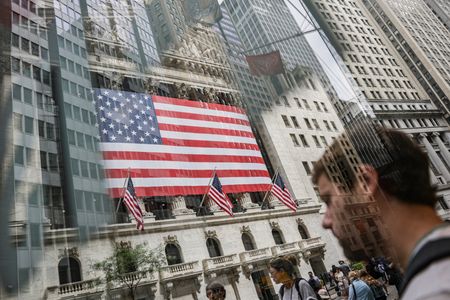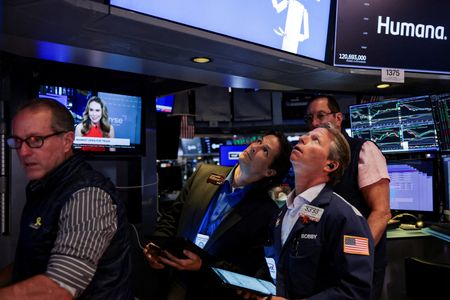By Polina Devitt
LONDON (Reuters) – Central banks are expected to help keep gold’s stunning rally going this year with buying aimed at further diversifying reserves away from the dollar due to risks stemming from U.S. President Donald Trump’s policies.
Russia’s invasion of Ukraine in 2022 provided the first catalyst for purchases by central banks, which have since bought more than 1,000 metric tons of gold a year, twice the annual average of the previous decade.
Spot gold hit its latest record at $3,167.57 a troy ounce on Thursday for a gain of 19% since the start of 2025 and a hefty 71% rise since the end of 2022.
In the final quarter of 2024, when Trump won the U.S. election, central bank purchases accelerated 54% year-on-year to 333 tons, according to an estimate from the World Gold Council (WGC).
“Emerging market central banks currently hold around 10% of their assets in gold. They should really hold 30% of their assets in gold,” said BofA commodity strategist Michael Widmer.
He said that would require central banks to increase their reserves by 11,000 tons of gold and added that uncertainty about U.S. economic policy would remain for some years to come.
“From the central banking perspective (uncertainty) means less incentive to add Treasuries into portfolios and more incentive to actually de-dollarise it,” he said.
U.S. Treasuries and the dollars needed to buy them have previously vied with gold for safe-haven status.
Trump’s tariff policies and global trade wars, his approach to the war in Ukraine and disregard and questioning of decades-old alliances with Europe have upended the world order.
“Those central banks which had (less) gold in their holdings would be looking to add more,” said a source selling gold to central banks. “This year’s demand from central banks may be the highest in many decades.”
Fears of spiralling inflationary pressures due to companies passing on tariffs to consumers in order to protect their profit margins as well as workers seeking higher wages have also boosted gold’s role as a store of value and wealth.
“We view gold’s price strength to date, and our expectation for it to continue, as primarily being driven by investors’ and official institutions’ greater willingness to pay for its lack of credit or counterparty risk,” Macquarie analysts said in a recent note.
Central banks are the third largest category of demand for gold after the jewellery and investment sectors and account for 23% of global consumption. Usually they are price sensitive, buying on dips and curbing purchases when prices rise.
Analysts say expectations of steadily higher gold prices mean they are unlikely to postpone buying.
However, central banks may choose not to disclose their purchases, as Trump has threatened tariffs on countries seen to be actively de-dollarising.
Official numbers reported to the International Monetary Fund reflect only 34% of the WGC’s 2024 total central bank gold demand estimate.
Data from WGC shows central banks reported adding a net 44 tons to their gold reserves in January-February with Poland and China being the largest buyers.
(Reporting by Polina Devitt; Editing by Pratima Desai and Joe Bavier)











